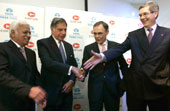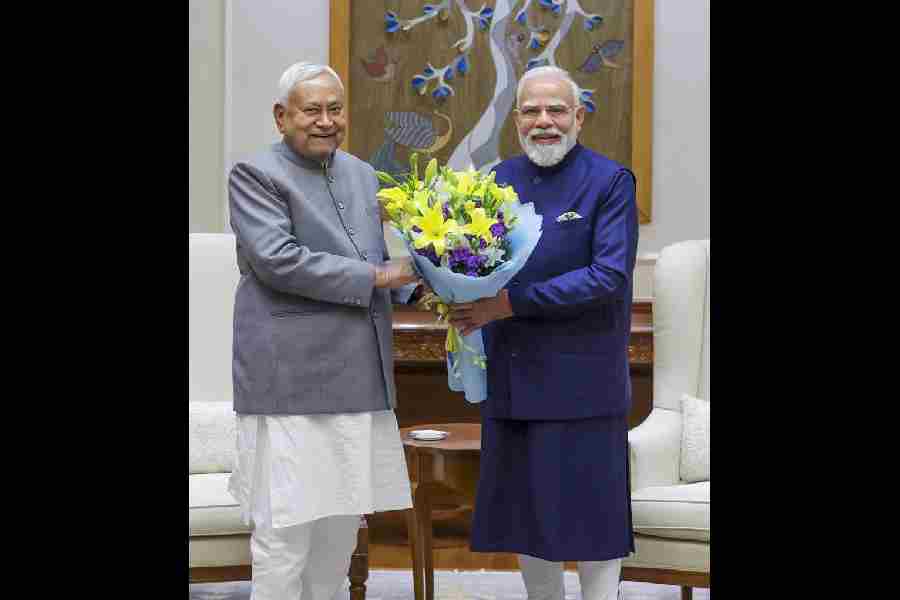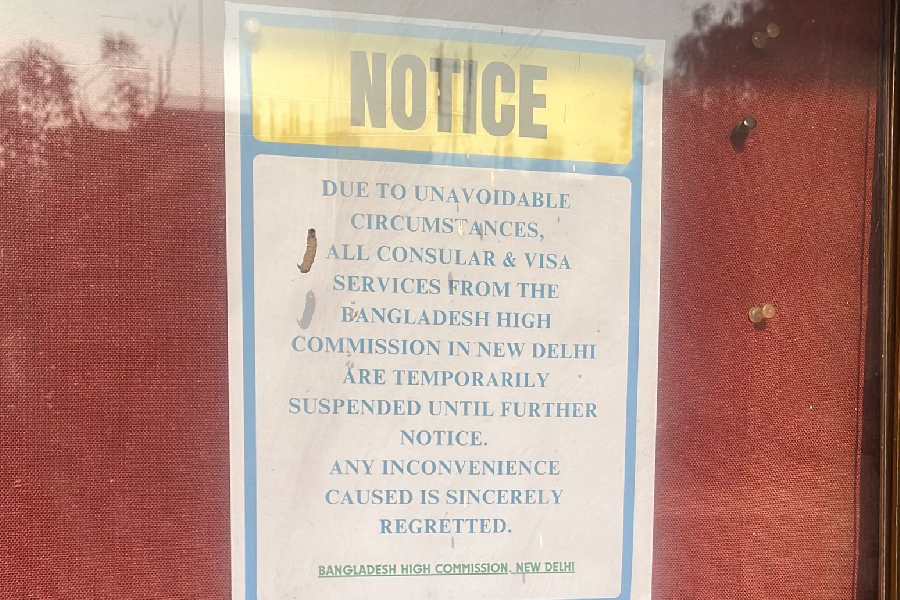 |
| Closing the deal: (from left) CEO, Tata Steel, B. Mutharaman, chairman Ratan Tata, Corus CEO, Jim Leng and chairman Phillippe Varin in London |
If people were surprised that the Tata Steel share plunged following the company’s successful acquisition of Corus, they wouldn’t have been had they done their homework. An analysis by consultants McKinsey shows that in global deals, the stock market judged that in more than two-thirds of the cases, all the value created goes to the shareholders of the target company. The winner is left patting himself on the back while his pocket gets picked.
But there is hope yet. The two-thirds figure relates to the period 1997-2000. “In the current boom, the proportion overpaying has averaged 57 per cent, decreasing from 63 per cent in 2003 to 56 per cent in 2006,” says the study.
Let the numbers men debate that one. If it’s a mistake, it has already happened. What is more important today is another number. Several studies have shown that some 65-80 per cent of mergers fail. The prime culprit is the inability of the two companies to mesh their cultures.
In India, the scene is changing; earlier, employees were scared of their company being taken over. Today, amid the overdose of jingoism, you can sense the approaching disaster. “We will show them the way,” an overseer at a forgings major that recently took over a foreign company told me. “We are, after all, the lowest cost producer in the world.” There is a growing assumption that this is India’s century and the country is fast adopting the arrogance that still marks “the Ugly American”.
These issues will crop up everywhere. In the corporate world, CEOs will have to ensure that they don’t derail global growth plans. “Workers in the West are not creatures out of a zoo,” says Mumbai-based HR consultant, Shashi Rao. “We should not treat them like that.”
The tendency of most Indian companies has been to fly down their top team to take charge of the taken-over unit. This has not created too many problems so far. Thanks to Reserve Bank of India restrictions, the war chest available was very small. Things have changed now.
Rao, who has witnessed many such take overs, says that Indian companies immediately send a finance man to the acquired company. His mandate is to cut costs with a vengeance. In the past, such people have been welcomed by foreign workers. In many cases, the units were not just sick but also closed. So they could hope that at least some of them would get back their jobs. “You can’t expect a similar reaction in a company that is making profits,” says Rao. She has a roadmap for such mergers. First, if you can leave the current management in place for some time, do so. Integrate, so to say, behind the scenes.
Secondly, the first interaction with employees of either company should not be that of the successful bidder visiting his new employees. Do it the other way round: ask the CEO of the taken-over company to visit the acquirer’s Indian plants instead and give him red carpet treatment. If the choice of CEO is not appropriate because of negative vibes that may have developed during the takeover phase, get a party of employees selected by the trade union instead. If you can’t see any value coming out of this, treat it as a PR exercise.
PR, both internal and external, is very important for a merger to succeed. Rao has a list of things one should do. But her key advice is that internal PR, which can successfully mesh cultures, is what will make the vital difference. Marriages work only when there is mutual give and take.
CORNER-ROOM VIEW
The greatest challenges to building global enterprises (%)
![]() Ability to maintain a common corporate culture 49
Ability to maintain a common corporate culture 49
![]() Ability to understand local customs and ways of doing business 44
Ability to understand local customs and ways of doing business 44
![]() Ability to service remote clients/customers effectively 41
Ability to service remote clients/customers effectively 41
![]() Impact of the global economy 36
Impact of the global economy 36
![]() Impact of geopolitical issues 25
Impact of geopolitical issues 25
Source: Accenture survey of 919 senior executives at many of the largest and most influential organisations around the world during September to December 2006










